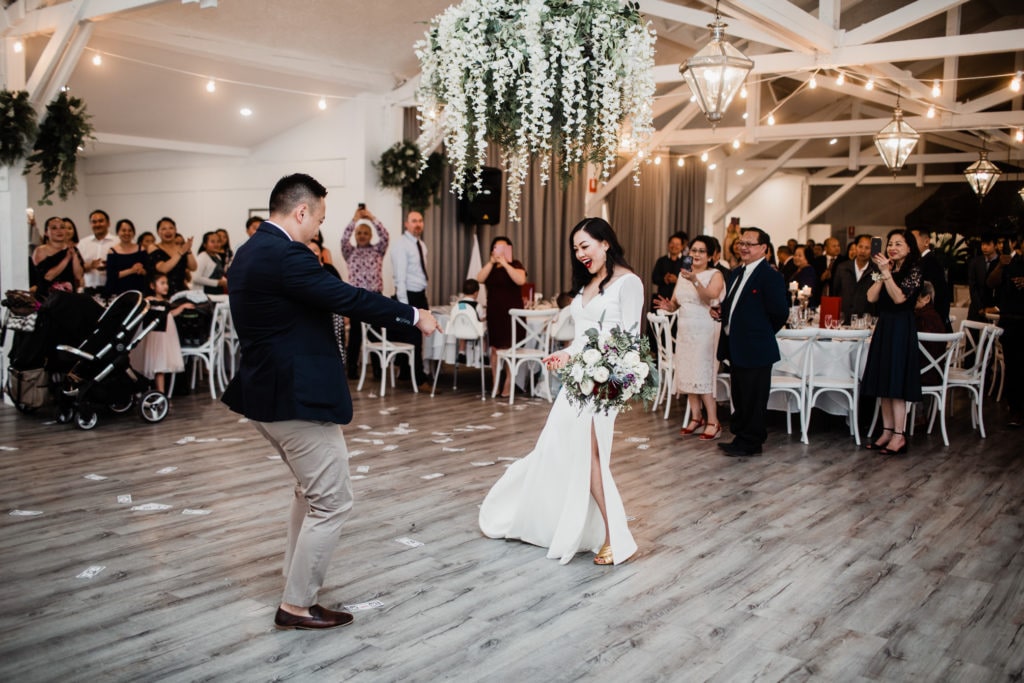Grappling with guest list anxiety?
Perhaps the trickiest part of planning your wedding is going to be the guest list. This is the most important day of your life and you want everyone to share it with you! But inviting the whole world is not an option, you will have to consider the cost and what other people want. Always start with a plan!
1. Decide how you'll divvy up the list
I won’t tiptoe around the truth: Making a guest list can get messy, especially if one or both sets of parents are involved in the planning or contributing financially. Be clear about your expectations before you accept help from them. Even if you’re paying for the wedding yourselves, it’s a good idea to get the families together and talk about the guest list so there are no surprises. I have noticed that some parents will expect to have a third of the guest list while others are happy to give full autonomy to the couple. Find out just where everyone stands, clear communication from the outset will make a massive difference to everyone.
2. Design your dream list
When you start building your list, jot down the names of everyone you could ever imagine attending your wedding, from old camp friends to that funny third cousin you met once at a family reunion. Just for this part, take your budget and venue out of the equation. You’ll have to do some trimming later on, but for now, think big.
Tip: If you’re tempted to invite even more people on a whim later, go back to this list as a reality check. If they were never on your dream list, are they really crucial now?

3. Be realistic about the number of guests to avoid stress later on
Crunching the numbers isn’t the most glamorous part of wedding planning, but there is a figure you really can’t avoid: your guest list count. Your budget and the venue size are the main factors that should play into this decision. Each guest adds to the number of plates your caterer will prepare, chair rentals and how much cake you’ll need. Choose a number that’s larger than your venue’s capacity and you’ll be holding your breath every time you open an RSVP. It’s much better to keep your number on the conservative side. If there’s room in the budget or you end up having more space than you thought you would, that will be a bonus later on!
4. Make some cutting rules (and actually follow them)
It’s time to return to reality and start trimming that dream list until you reach your real number. The easiest way to cut the list is to come up with rules and actually stick to them. We promise it’ll be easier in the long run and you’ll avoid potential drama down the line. What do we mean by “rules”? Here are a few common ones.
Rule 1: If neither of you has spoken to or met them or heard their name before, don’t invite them.
Rule 2: Not crazy about inviting children to your party? Don’t feel bad about having an adults-only wedding.
Rule 3: If neither of you has spoken to them in three years and they’re not related to you, don’t invite them.
Rule 4: If there’s anyone who’s on the list because you feel guilty about leaving them off (maybe because you were invited to their wedding or they’re friends with lots of people who are invited), don’t invite them.

5.Make an A-list and a B-list
This is a great #weddingplanninghack! Having two lists is how you’ll be able to invite the most people without raising your budget or having to find a larger venue. Here’s how it works: Your A-list consists of the must-have invites you couldn’t imagine not having at your wedding, like your family and close friends. They’ll receive your first round of invitations. Your B-list is made up of guests you still really want to be there, so don’t put just anyone on it. If you start getting RSVPs and it turns out you have enough “regrets,” then you’ll start sending invites to your B-list (in order of importance).
Tip: Send your A-list invites 10 weeks in advance (a little earlier than usual), which will give you time to send invites to your B-list six to eight weeks before your wedding. If you are going the print way don’t forget to print a second set of reply cards with a later RSVP date (sending RSVPs with a date that has passed is a dead giveaway that the recipients were on your B-list).
6. Stick to the plan
Boundaries – set them and stick to them. When it comes down to it, this is your wedding. If budget is the issue, then the solution could be as simple as having whoever wants more guests chip in extra to pay for the overflow.
In many cases, the venue caps the guest list and when you decide together on the divvy up in the beginning, promise each other that you will remember it!
Tip: Have any tricky conversations face to face. You want to make sure you’re sending the right signals, and when there are emotions involved, both sides need to be heard and understood.

7. Avoid last-minute add-ons
Whether or not you spread the word yourself, you’re probably going to get one or two awkward comments along the lines of, “I can’t wait to come to your wedding!” from someone you’re not so sure about inviting. In the moment, it can seem like an easy out to respond, “Me too!” But do this and you’ll either end up having to add them to the list or having an even more uncomfortable conversation that’s basically akin to disinviting them. The best thing you can do is steer clear of wedding specifics while you’re still in the early planning stages.
Tip: Prepare yourself for potentially awkward conversations by coming up with a polite but firm response that can’t be misinterpreted. Something along the lines of, “Of course we’d love to invite everyone, but unfortunately, with the venue space and our budget, we aren’t able to.” Then take the conversation in a totally different direction.
